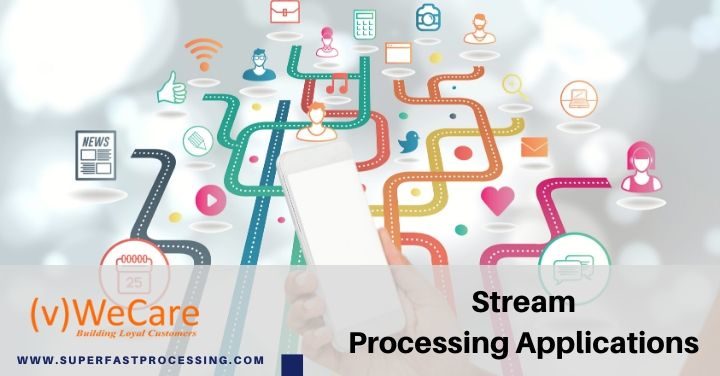Customers of today have become finicky. With access to the Internet at their fingertips at all times (thanks to the smartphones), they are able to analyze products/services faster than ever before. Social media platforms like Facebook and Twitter have transformed into information portals for customers. The wealth of knowledge derived from these platforms sways the decision of millions and shapes the fortunes of brands across the globe. For a business to prosper in the current times, it has become crucial to unearth customer interest and launch product/services accordingly. This is where Big Data analytics and stream processing applications come into the picture.
The Importance of Real-Time Data Stream Processing
Real time data stream processing can be put to good use in a number of scenarios. It is particularly useful in situations where data is in motion i.e. it is flowing either in or out of the system. User actions on websites, data generated by sensors and financial trades in stock exchange are prime examples of business situations where data is always flowing. In such cases, stream processing applications can come in handy as they start working on the data as soon as it is generated. Below are some of its important benefits:
Quick insight generation for devising business strategies
A real-time data stream processing platform generates insights consistently. So, whenever there is a situation developing, companies are able to understand the trends fast and devise strategies accordingly to exploit the market conditions.
Less money spent on storage of data
For traditional data processing systems, large amount of storage space is required. These systems first store the data on HDD or SSD and then process them in batches. Hence, the money spent on storage systems is always high. Considering the modern-day requirements posed by new tech like IoT that generates massive amount of data, these systems are not cost-effective. On the contrary, an in-memory based real time data stream processing computes the data as soon as it arrives thus reducing the storage space requirements. Therefore, it is a better fit for newer technologies and emerging requirements.
Critical Attributes of a Real-Time Data Stream Processing Platform
A real-time data stream processing platform can only be useful if it serves the present-day requirements of business operations. Have a look at some of its essential attributes:
- Fault tolerance – A data processing system is only useful if it stays up for a long duration of time. Therefore, it needs to have high fault tolerance to withstand minor faults and self-diagnostics capabilities to fix the fault when it arises.
- Horizontal scalability – The processing requirements may increase at just about any time for a company. Therefore, the real-time data stream processing platform should allow for the addition of servers to meet the growing requirements.
- Load balancers – When you have several platforms lined up in series, you require load balancer feature to offload the work to a different server when one of the servers is under extreme load and likely to malfunction.
Superfastprocessing uses AWS platform and provides state-of-the-art processing solutions for both financial and telecom industries. It has experienced DBAs, software programmers and server experts with long-term experience in the field.

